
Roots
To truly comprehend the intricate weave of textured hair, especially how its length has been seen across generations and geographies, one must begin at the source—the very biology and the ancient knowing that predates colonial impositions. We speak not of mere strands, but of living archives, each curl and coil holding memories whispered down ancestral lines. The journey to understanding what historical biases impacted textured hair length perceptions begins by recognizing that these perceptions rarely stemmed from objective observation. Instead, they arose from a particular gaze, one often shaped by ideals foreign to the abundant variety of the human family, particularly the varied expressions of Black and mixed-race ancestries.
Consider, if you will, the biological truth of textured hair. It springs forth from follicles that are often elliptical, not perfectly round, leading to a natural curvature as the hair shaft emerges. This curvature means that a strand of textured hair, when extended, reveals a length far greater than its apparent, compacted length in its natural, coiled state. This elemental biological truth became a ground upon which misperception, and indeed, deliberate misrepresentation, was built.
For centuries, the visual presentation of coiled hair was misconstrued, often deliberately, as inherently shorter or less capable of growth than straight hair. This biological reality, coupled with the way different hair types lay and present, was selectively interpreted through a lens that valued straightness, equating it with an idealized length and a particular standard of beauty.
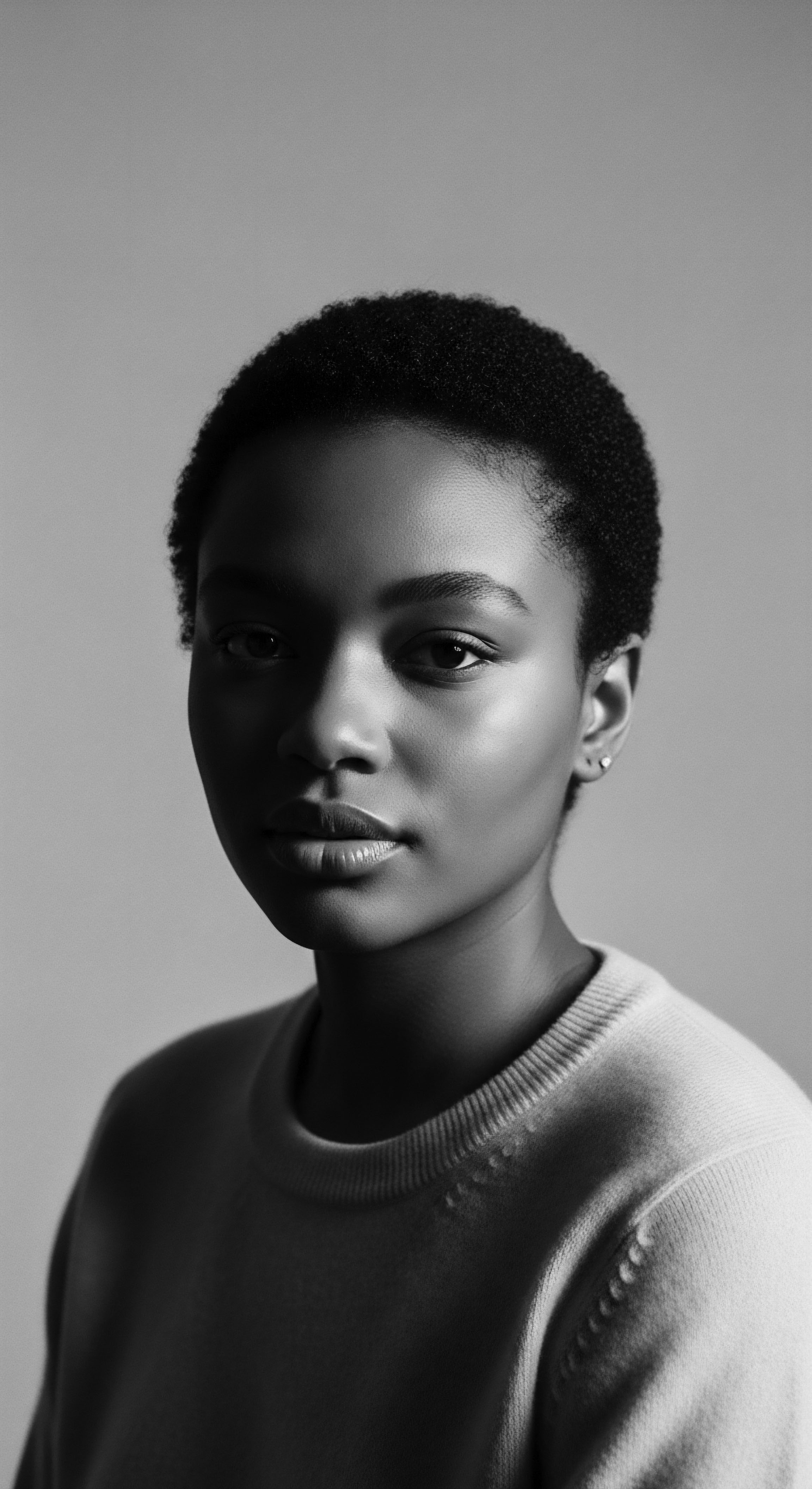
The Hair’s Intrinsic Path and Its Misreading
The very anatomy of textured hair, from its elliptical follicle to the distribution of keratin, gives it its unique strength, elasticity, and magnificent ability to shrink. This characteristic shrinkage, often celebrated within communities as a sign of healthy moisture retention and vibrant curl pattern, became a target for external judgment. A visible length, easily measured with a ruler against a stretched strand, became the ‘real’ length, dismissing the voluminous, spring-like presentation that is the natural state of many textured hair types. This imposed a framework where the hair’s own inherent qualities were deemed deficiencies against an alien metric.
Ancestral knowledge, however, held a different understanding. For countless generations, the health and vitality of textured hair were measured not by its stretched length, but by its resilience, its sheen, its ability to hold intricate styles, and its role in conveying status, spiritual connection, and community identity. Hair was a living crown, not a measurable commodity to be judged against a foreign scale. The concept of “length” as a primary indicator of beauty or health is, in many ways, a modern, Western construct, profoundly influenced by racial hierarchies that sought to categorize and diminish non-European features.
The true length of textured hair often eludes a casual glance, its vibrant coils holding more extension than immediately apparent, a biological truth frequently misjudged through biased lenses.
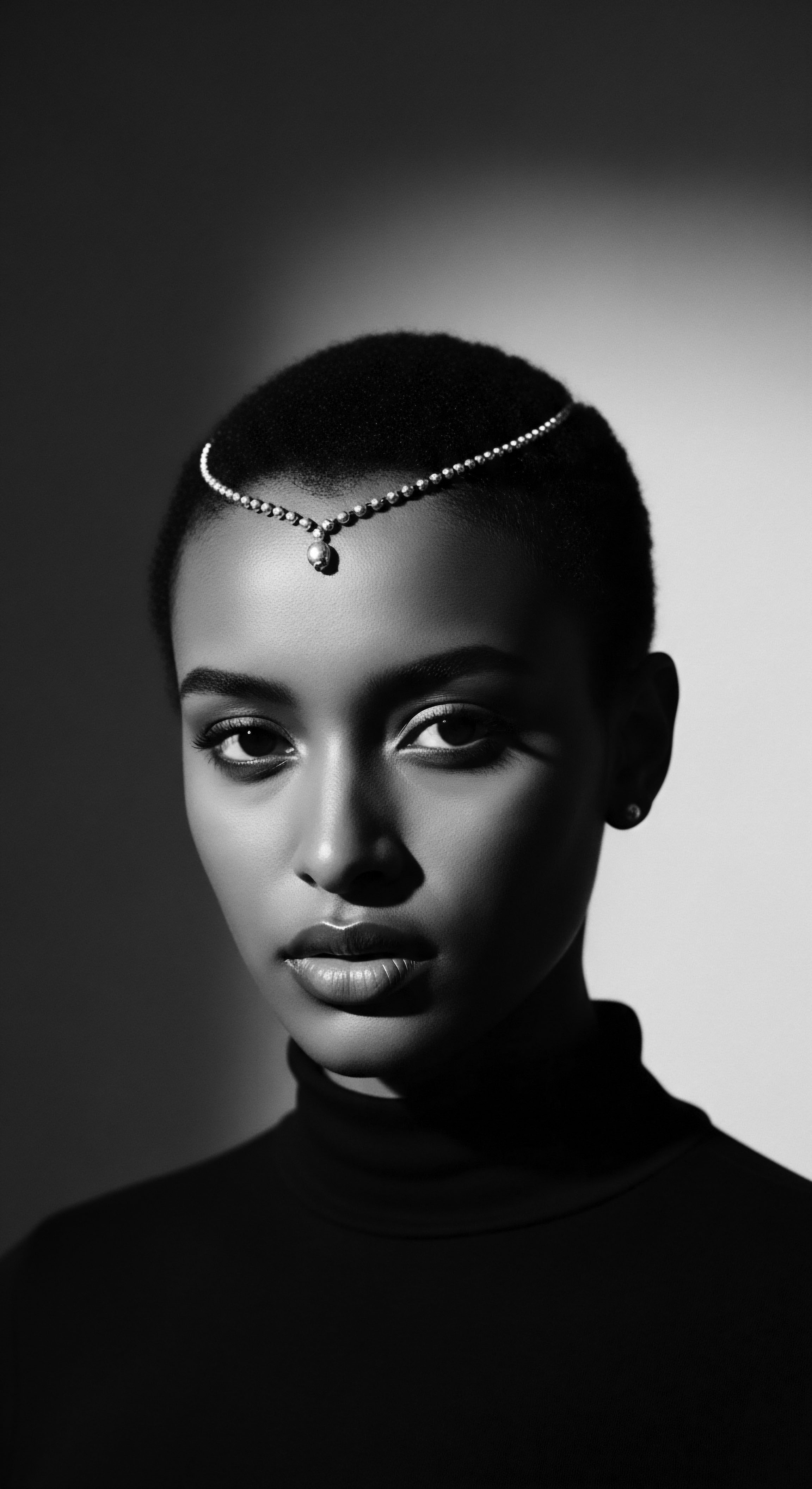
Anatomical Nuances and Historical Interpretations
When examining the hair anatomy specific to textured hair, it becomes clear that its unique structure is directly responsible for its varying degrees of coil and curl. The cortex, the inner layer of the hair, differs in shape and keratin distribution compared to straight hair, contributing to its spring and resilience. This structural difference means that textured hair, even when meticulously cared for, will present a different visual length than hair with a straighter conformation, even if both grow at identical rates.
Historically, these anatomical differences were not viewed with scientific curiosity but through a socio-racial hierarchy. The idea of “good hair” versus “bad hair” became deeply ingrained, where “good hair” often mirrored European hair characteristics, including its apparent length. This wasn’t merely an aesthetic preference; it was a tool of control and assimilation. Consider the Linnaean classifications of human races, which often included derogatory descriptions of African hair, terming it “wool” or comparing it to sheep’s fleece.
These pseudo-scientific assertions directly contributed to the perception that textured hair was inherently inferior, and by extension, incapable of achieving significant length or growth. This misrepresentation was designed to dehumanize and justify oppressive systems.
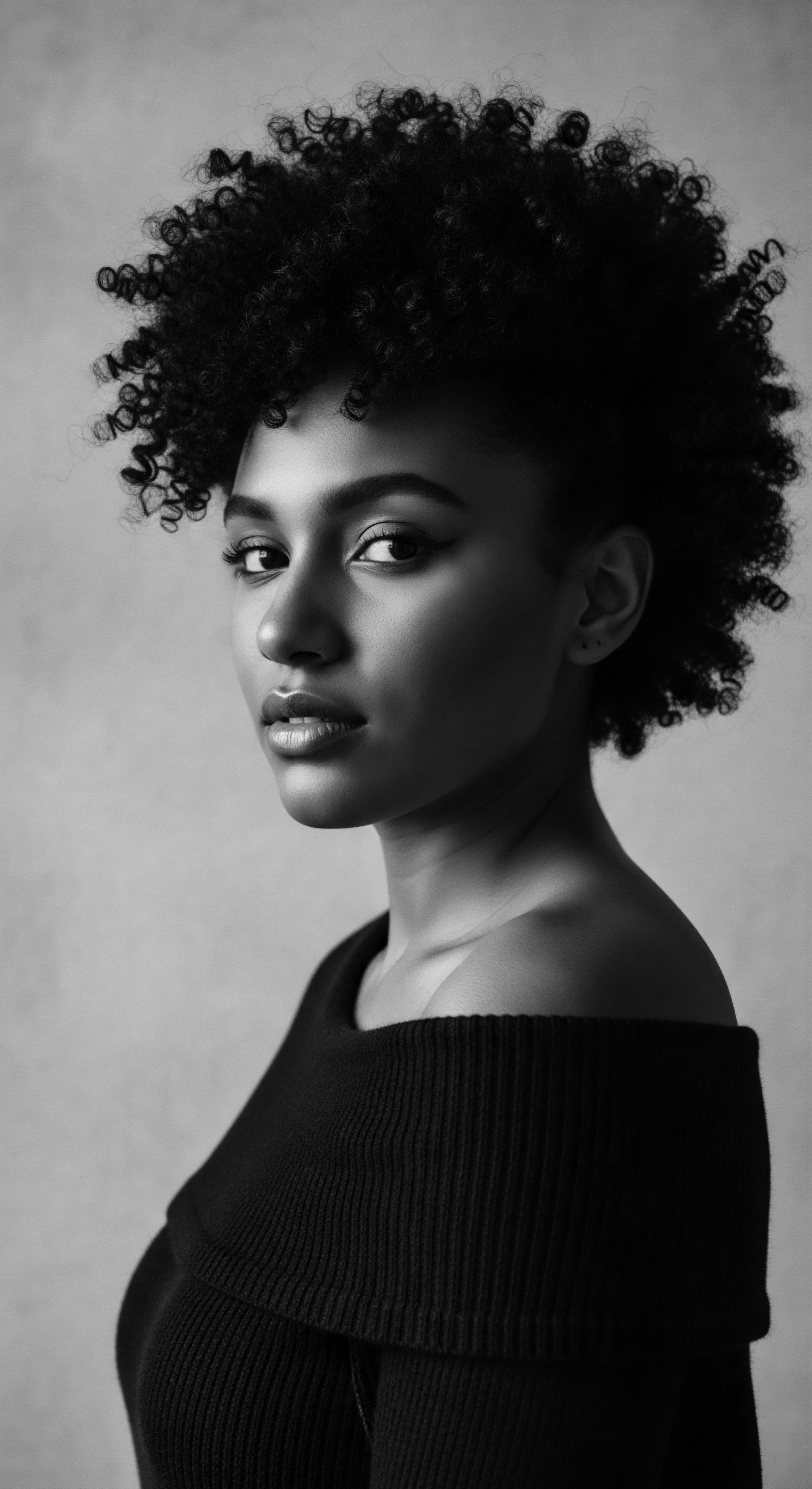
Early Classifications and the Distortion of Truth
The earliest attempts at classifying hair types, often emerging from European colonial encounters, were deeply flawed, imbued with racial prejudice that skewed perceptions of length. The systems that arose, which would eventually lead to modern typing charts, often failed to account for the unique growth patterns, elasticity, and shrinkage of textured hair. They prioritized visual elongation, which inherently disadvantaged hair that coiled closely to the scalp.
- Follicle Shape ❉ Textured hair often emerges from elliptical or oval-shaped follicles, contrasting with the round follicles typical of straight hair. This shape causes the hair shaft to curl as it grows.
- Curl Pattern ❉ The degree of curl, from loose waves to tight coils, is a direct result of the follicle shape and the way keratin is distributed, leading to varying degrees of visible length versus actual length.
- Shrinkage ❉ A healthy and moisturized coil will contract, often appearing significantly shorter than its true length when stretched. This natural phenomenon was often misinterpreted as slow growth or an inability to gain length.
The lexicon of textured hair, too, was impacted. Words like “nappy” or “kinky,” originally neutral descriptors or even terms of endearment in some African languages, were weaponized and given negative connotations in English to reinforce the idea of inferiority. This linguistic bias directly contributed to the societal narrative that textured hair was unruly, undesirable, and inherently “short” because it did not flow in long, straight cascades. Such linguistic impositions reinforced the visual misjudgment of length.

Growth Cycles and Imposed Narratives
The hair growth cycle—anagen (growth), catagen (transition), and telogen (rest)—is universal across all hair types. However, historical biases often led to the false belief that textured hair had a shorter anagen phase, thus limiting its maximum length. This idea was not based on scientific observation but on the prevalent misperception of its visible length. In reality, hair growth rates vary by individual, diet, genetics, and care practices, not by curl pattern.
Ancestral communities understood the impact of diet, environmental factors, and traditional remedies on hair vitality. Their practices, such as oiling, protective styling, and herbal treatments, aimed to prolong the anagen phase and maintain the strength of the hair shaft, thereby promoting its natural growth and retention. These practices demonstrate a deep understanding of hair health that transcended mere visual length, prioritizing integrity and strength. The biases concerning length, therefore, represent a disregard for both biological fact and ancestral wisdom, choosing instead to interpret visual cues through a prejudiced lens.

Ritual
The daily and ceremonial rhythms of textured hair care, its styling, and adornment have always been more than aesthetic choices. They are rituals, imbued with purpose and ancestral wisdom, expressions of identity and community. Yet, even within these sacred practices, the shadow of historical biases regarding length perceptions has loomed, influencing not only how styles were viewed by outsiders but also, at times, how they were adopted or adapted within communities under duress. The rich art and science of textured hair styling tell a complex story of resilience, innovation, and resistance against these imposed length ideals.
Consider the protective styling encyclopedia that spans generations. Styles like cornrows, braids, and twists were not merely decorative; they were ingenious methods of safeguarding the hair shaft, minimizing manipulation, and preserving moisture. These styles, often intricate and requiring immense skill and time, allowed hair to retain length that might otherwise be lost to breakage.
Yet, in colonial and post-colonial societies, these styles were often derided as “unprofessional” or “unclean,” further reinforcing a biased perception that textured hair was somehow less refined or incapable of length. The true genius of these styles, their role in hair preservation and length retention, was often ignored in favor of a superficial, prejudiced judgment.

The Ancestral Roots of Protective Styling
Protective styles hold deep ancestral roots, tracing back centuries across various African civilizations. In many West African societies, for example, complex braiding patterns conveyed marital status, age, lineage, and spiritual beliefs. These styles inherently nurtured hair, allowing it to grow and strengthen. The visual compactness of many braided styles meant that the hair’s true length remained hidden, protected within the interwoven strands.
However, as biases took root, this very compactness became a point of contention. Hair that did not visibly “hang” was deemed short or unkempt. The sophisticated practices that allowed for growth and retention were dismissed because they did not conform to an arbitrary standard of flowing length. This forced communities to confront a dilemma ❉ uphold ancestral practices that fostered health and identity, or conform to external pressures for visible length that often required damaging alteration of the hair’s natural state.
Protective styles, born of ancestral ingenuity for hair health and expression, were often misjudged as signs of lesser length, reflecting a deep-seated bias against the natural presentation of textured hair.
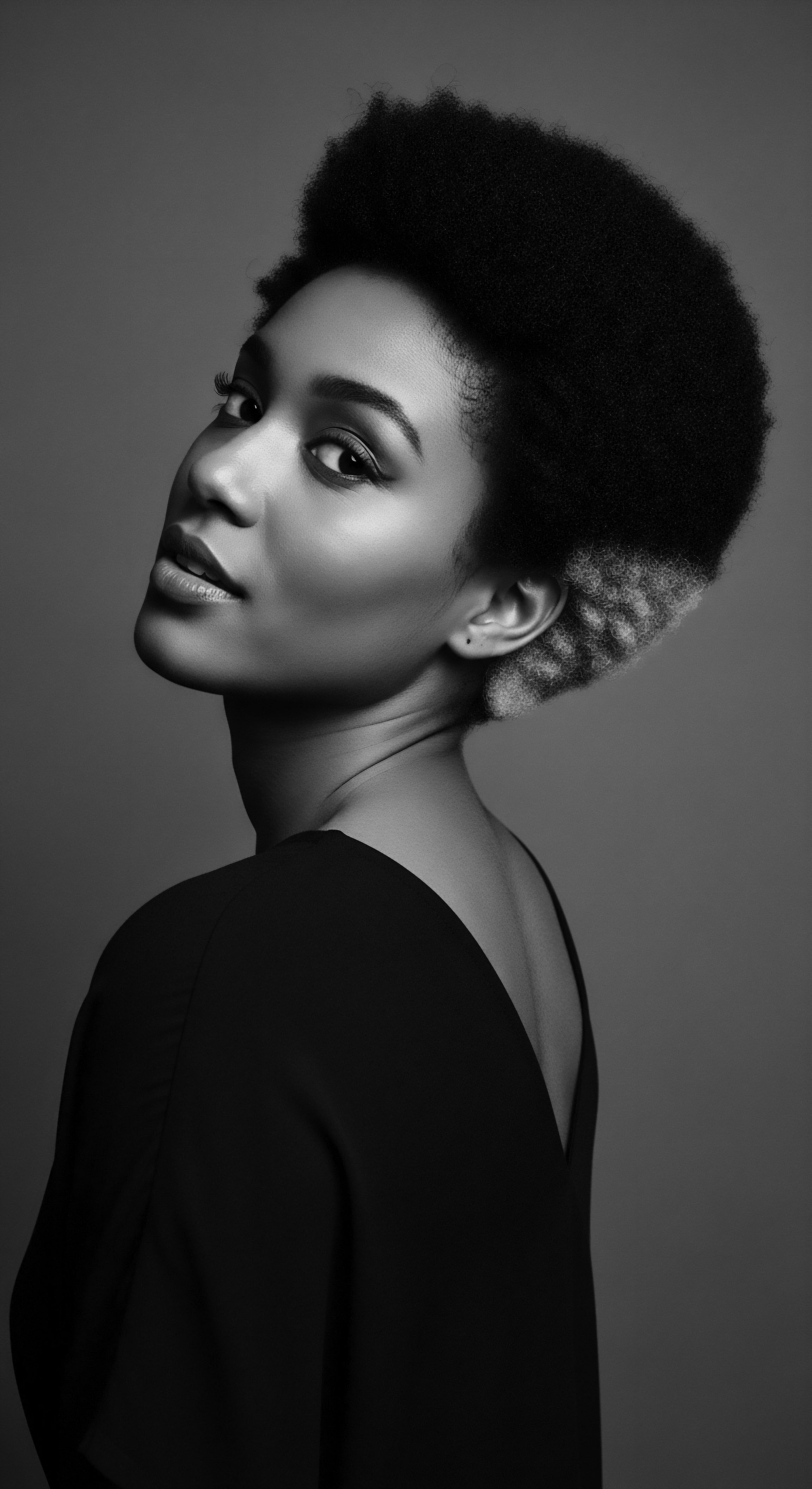
Natural Styling and Defining Truths
The natural styling and definition techniques that celebrate the inherent coil, curl, and wave of textured hair have faced similar battles. Wash-and-gos, twist-outs, and braid-outs, all designed to highlight the hair’s natural pattern, present hair in its most authentic form. This authenticity, however, often means embracing shrinkage, a characteristic that directly challenges the biased perception of desirable length.
Historically, the pursuit of visible length, influenced by societal biases, led many to straighten their hair. This often involved harsh chemicals or excessive heat, methods that compromised the hair’s integrity and, paradoxically, could lead to breakage, making it harder to retain length over time. The historical record bears witness to the widespread adoption of relaxers and hot combs as tools to achieve a semblance of the desired straightness and, by extension, the appearance of greater length. This was not a pursuit of health, but a reaction to an imposed standard.
A significant case study demonstrating this impact can be found in the historical prevalence of chemical relaxers. During the mid-20th century, particularly among Black women in the Western world, relaxers became a widespread means of achieving straight hair, largely influenced by societal pressures that equated straightness with professionalism, beauty, and by extension, visible length (Banks, 2000). Despite the known damage and breakage associated with these harsh chemical treatments, the desire to conform to these biased length perceptions often outweighed concerns for hair health. The very act of straightening hair to appear longer was a direct consequence of a biased gaze that dismissed the inherent beauty and true length potential of coiled hair in its natural state.

Tools of Transformation and Their Historical Weight
The complete textured hair toolkit has always comprised a fascinating array of implements, from ancestral combs carved from wood or bone, designed to gently detangle and sculpt, to modern tools like diffusers and silk scarves. Each tool plays a role in fostering hair health and achieving desired styles. However, the introduction and widespread adoption of tools like the hot comb and later the flat iron marked a significant shift, often driven by the pursuit of stretched length.
| Tool/Practice Combs (wood/bone) |
| Traditional/Ancestral Purpose Gentle detangling, styling, scalp stimulation. |
| Impact on Length Perception (Biased Lens) Facilitated healthy growth, but perceived length remained hidden in coiled state. |
| Tool/Practice Braiding/Twisting |
| Traditional/Ancestral Purpose Protective styling, cultural expression, length retention. |
| Impact on Length Perception (Biased Lens) Hair length was protected but often visually minimized, deemed "short" by external standards. |
| Tool/Practice Hot Comb/Relaxer |
| Traditional/Ancestral Purpose To achieve straightness, conform to Eurocentric beauty standards. |
| Impact on Length Perception (Biased Lens) Artificially stretched hair to appear longer, despite potential damage to true length potential. |
| Tool/Practice Silk Wraps/Bonnets |
| Traditional/Ancestral Purpose Protecting hair from friction, retaining moisture. |
| Impact on Length Perception (Biased Lens) Preserves health and true length, yet a practice often hidden, as "uncovered" straight hair was idealized. |
| Tool/Practice The historical use of hair tools often shifted from nurturing natural growth to altering texture in pursuit of perceived, biased length ideals. |
The cultural pressure to present hair in a straightened form, which gave the illusion of greater length, led to generations relying on methods that could compromise the hair’s natural resilience. The constant tug-of-war between maintaining natural length through protective measures and achieving perceived length through straightening techniques speaks volumes about the historical biases that permeated society’s view of textured hair. This historical pressure shaped not only styling practices but also the very self-perception of length within these communities.

Relay
The transmission of knowledge, practices, and perspectives across generations forms a living chain—a relay of wisdom. Within the realm of textured hair, this relay reveals how historical biases regarding length perceptions have been inherited, challenged, and transformed. Understanding the impact of these biases on holistic care, nighttime rituals, and problem-solving requires a deep inquiry into both ancestral philosophies and the contemporary landscape. It is here that we truly connect the elemental biology with lived experience, seeking paths to wellness rooted in heritage.
Building personalized textured hair regimens today often draws from a tapestry woven with ancestral wisdom and modern scientific understanding. For example, the ancient practice of oiling the scalp and strands, prevalent in many African and diasporic communities, speaks to an intuitive understanding of moisture retention and scalp health. These practices, passed down orally and through observation, focused on vitality and protection, not simply on visible length. The emphasis was on maintaining hair’s integrity, which in turn allowed for its natural growth and length retention.

Ancestral Wisdom and Modern Protocols
The bias that coiled hair cannot grow long directly contradicted the lived experiences of many communities. Ancestral practices, meticulously crafted over centuries, attest to the ability of textured hair to attain significant lengths when properly cared for. These regimens often included specific herbs, plant oils, and gentle detangling methods designed to minimize breakage and promote a healthy scalp environment, the foundation for any growth.
For example, the widespread use of shea butter, known for its occlusive and emollient properties, or various plant-based oils like castor oil, was not simply about making hair soft. These natural ingredients played a role in fortifying the hair shaft, reducing friction, and protecting it from environmental stressors that could impede length retention. The focus was on strength and vitality, understanding that these qualities naturally result in length.
The enduring power of ancestral hair care routines lies in their holistic approach, prioritizing the hair’s intrinsic health and resilience over externally imposed, biased standards of visible length.

The Nighttime Sanctuary and Hidden Wisdom
The nighttime sanctuary , particularly the wisdom of using bonnets and silk wraps, represents a profound aspect of holistic care often overlooked in discussions of length. For centuries, various forms of head coverings were used across African cultures for protection, adornment, and spiritual significance. The practical function of preserving hairstyles and preventing tangles was paramount. In the context of retaining length, protecting hair overnight from friction against absorbent fabrics, which can lead to dryness and breakage, is indispensable.
When the dominant societal gaze undervalued textured hair, suggesting its inherent inability to grow long, the protective practices of the night became even more significant. They were acts of resistance, quietly preserving the hair’s health and true length, even when the outside world refused to acknowledge it. This hidden ritual sustained the hair’s potential, allowing it to flourish away from critical eyes.

Addressing Misconceptions Through Science and Heritage
The textured hair problem solving compendium must address the enduring misconception that textured hair is inherently fragile or prone to breakage, which directly feeds into the false perception of limited length. While its coiling pattern can make it vulnerable to tangles if not properly handled, textured hair possesses a unique elasticity and strength when moisturized and cared for. This inherent strength is a testament to its evolutionary design, adapted to diverse climates and environments.
This historical bias against textured hair’s strength led to damaging practices, such as excessive pulling during detangling or the use of harsh chemical processes, all in the pursuit of stretched length. These actions, ironically, caused the very breakage that perpetuated the myth of textured hair’s inability to grow long. A truly holistic approach recognizes this cycle, advocating for gentle handling, deep conditioning, and protective styling—methods that resonate with ancestral practices.
How do historical dietary shifts connect to length perception?
The holistic influences on hair health extend beyond topical care to include nutrition, stress management, and overall well-being. Historically, certain dietary patterns and access to nutrient-rich foods varied significantly for Black and mixed-race communities, particularly during periods of enslavement and systemic oppression. Nutritional deficiencies could impact hair growth and strength, sometimes creating a physical reality that seemed to confirm biased theories about textured hair’s limited length. However, this was a result of systemic deprivation, not an inherent biological limitation of the hair itself.
Moreover, the chronic stress experienced due to racial discrimination and systemic prejudice has a documented impact on overall health, including hair growth cycles. Telogen effluvium, a form of temporary hair loss, can be triggered by severe stress. When entire communities faced generations of systemic stress, it becomes clear how external factors, driven by bias, could indirectly contribute to the perceived difficulty of achieving and retaining length. This complex interplay of historical bias, social conditions, and biological response speaks to the deep, interconnected nature of hair health and heritage.
- Dietary Practices ❉ Ancestral diets, rich in natural proteins, vitamins, and minerals from diverse plant sources, naturally supported robust hair growth, a testament to the connection between internal health and external vitality.
- Stress Management ❉ Traditional communal practices, spiritual rituals, and resilience strategies often served as mechanisms to cope with hardship, inadvertently supporting physiological processes, including hair health.
- Herbal Remedies ❉ The knowledge of specific herbs and plant extracts, used for both internal consumption and external application, contributed to healthy scalp conditions and hair strength, counteracting environmental challenges to length.
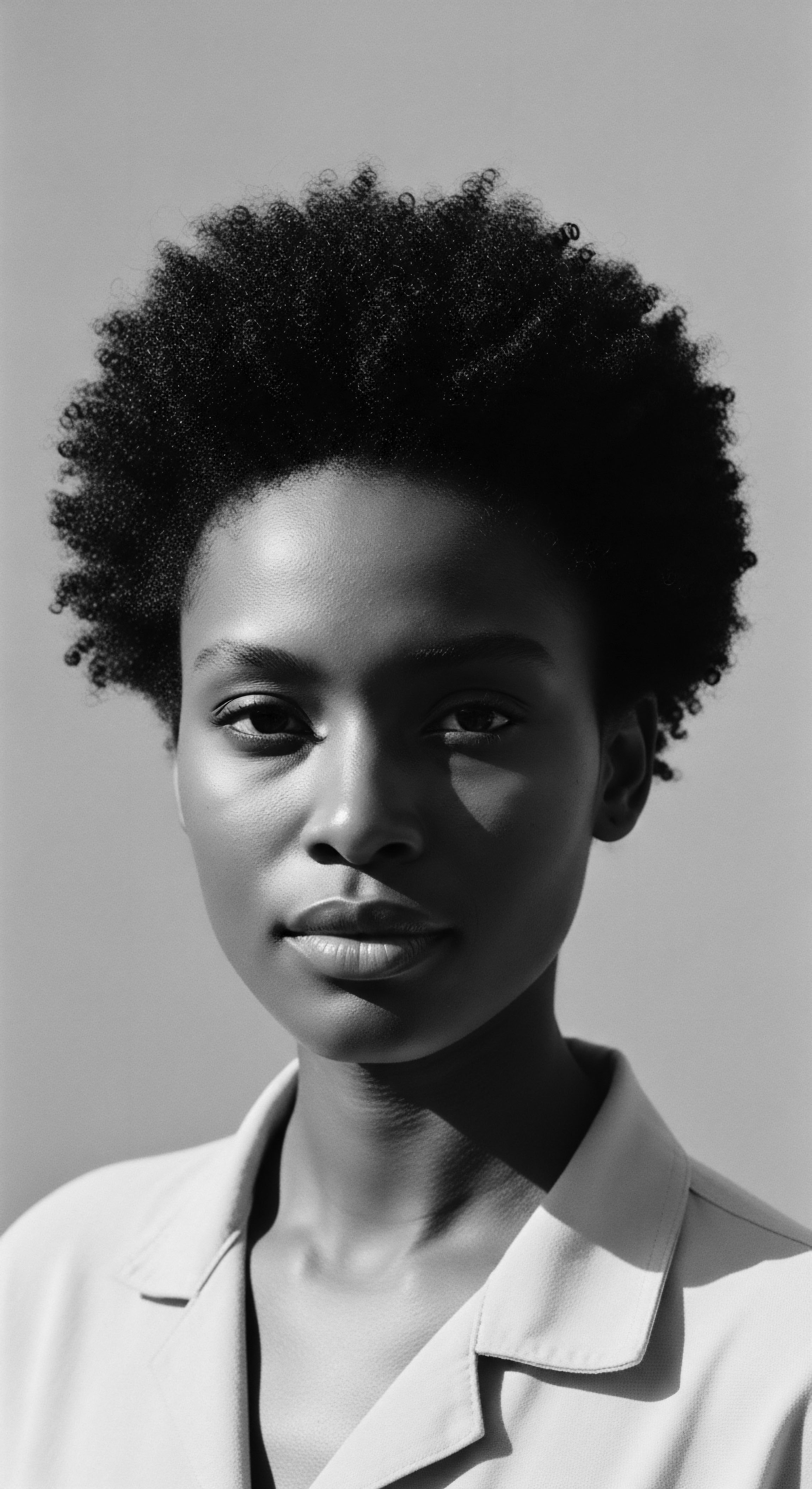
Reflection
The strands that grow from our scalps are more than protein; they are storytellers, chronicling journeys through time, identity, and the persistent echoes of heritage. The historical biases that have long clouded perceptions of textured hair length reveal a deeper truth ❉ that beauty standards are not neutral constructs but powerful tools, often shaped by those who seek to define, diminish, and control. Yet, within every coil and every ripple, there resides an enduring defiance. It is a defiance found in the resilience of traditional practices, in the sacred space of the nighttime ritual, and in the unwavering commitment to honoring hair in its most authentic form.
Roothea’s ‘Soul of a Strand’ ethos reminds us that each hair, in its complete expression, contains a universe of wisdom—a cosmic helix spiraling through history, resisting reduction. The journey of textured hair length perception is thus a lens through which we can witness the power of ancestral knowing, the quiet strength of community, and the profound liberation found in reclaiming one’s inherent beauty. It compels us to look beyond superficial measures, to find the true length, the true strength, and the true splendor of hair in its natural, untamed glory, connecting us to the unbroken lineage of those who understood its sacred potential long before the world tried to tell them otherwise.
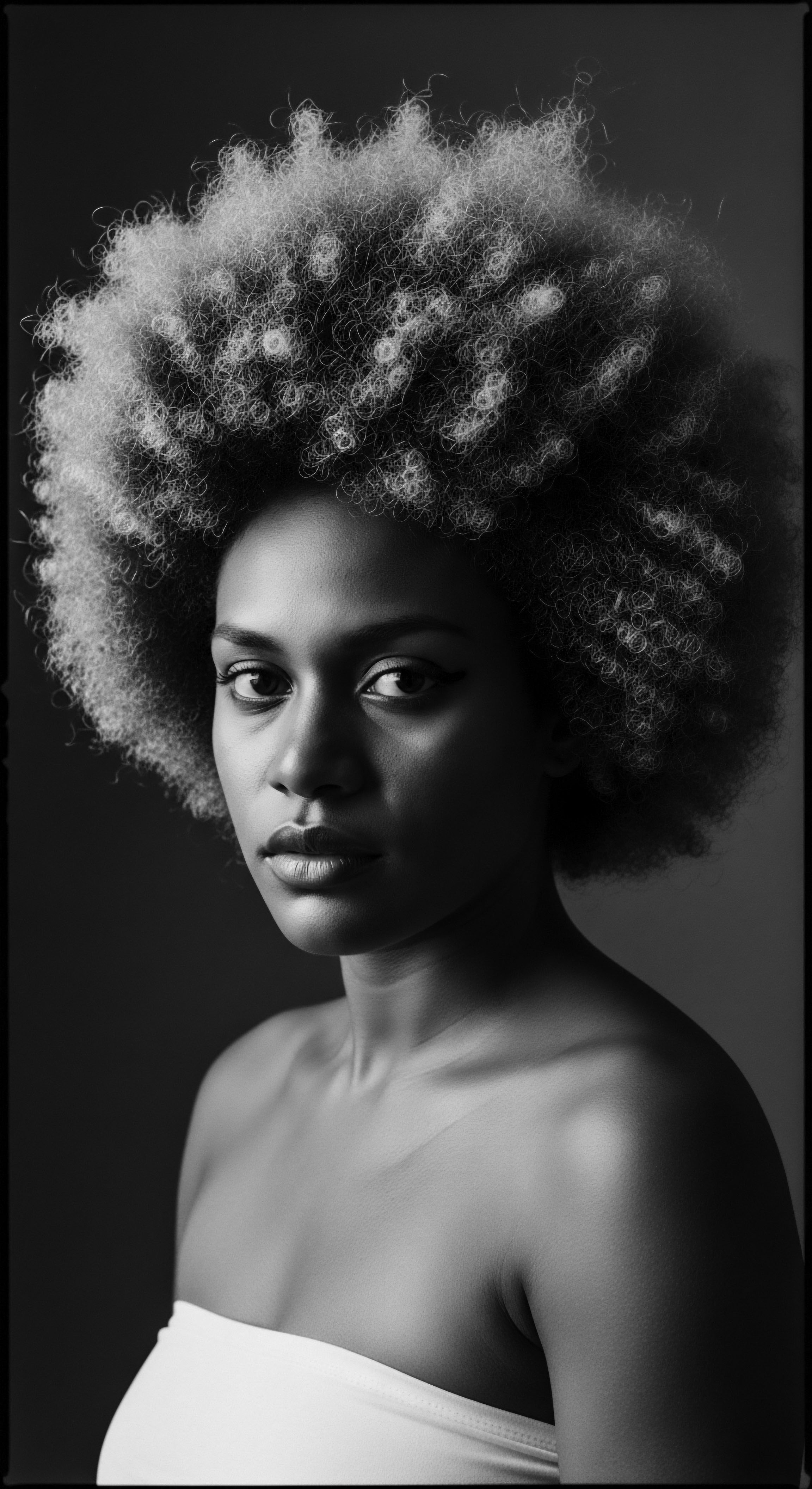
References
- Banks, Ingrid. (2000). Hair Matters ❉ Beauty, Power, and Black Women’s Consciousness. New York University Press.
- Byrd, Ayana. (2001). Hair Story ❉ Untangling the Roots of Black Hair in America. St. Martin’s Press.
- Grier, William H. & Cobbs, Price M. (1968). Black Rage. Basic Books.
- Mercer, Kobena. (1994). Welcome to the Jungle ❉ New Positions in Black Cultural Studies. Routledge.
- Opoku-Mensah, Kwame. (2010). The Science of Black Hair ❉ A Comprehensive Guide to Textured Hair Care. CreateSpace Independent Publishing Platform.
- Patton, Tracey Owens. (2006). African American Hair ❉ A Cultural and Historical Examination. University Press of Mississippi.
